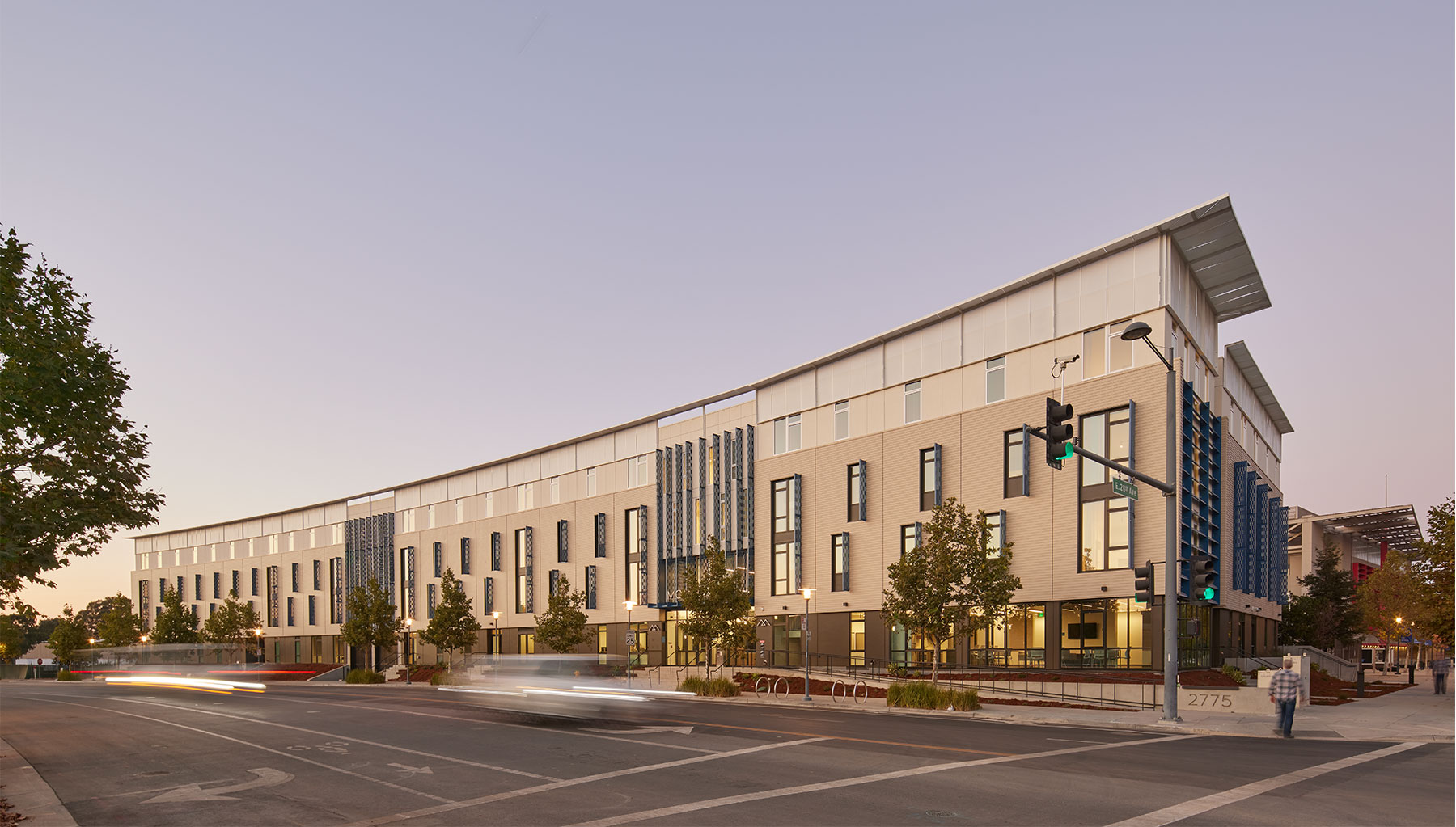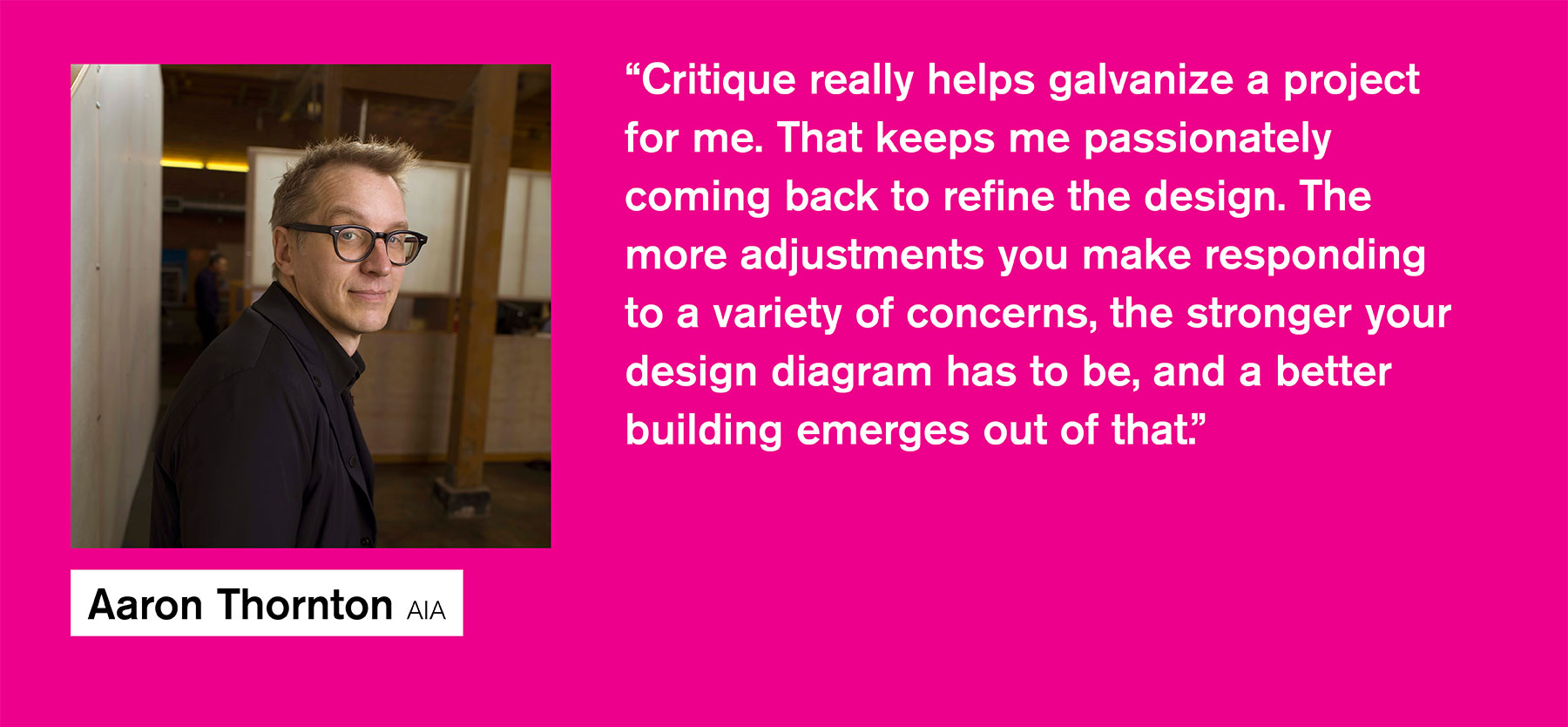Q&A: Aaron Thornton

LMSA Principal Aaron Thornton discusses how collaboration makes for stronger design, how he balances client and community needs, and how Star Wars inspired his career.

Q: What led you to become an architect?
I’m a Wisconsin farm boy who grew up in small-town Middle America. When I was a kid, I wanted to be an artist. My parents were like, “How will you feed yourself? You’ve got to find something real to do.” So I chose architecture. I went to the University of Wisconsin-Milwaukee. After spending a semester in Europe studying philosophy and art history, I came back for my junior year and started my architecture core classes. That’s when I fell in love with architecture for real.
Q: How did you end up at Leddy Maytum Stacy Architects?
When it came time for graduate school, I went to the College of Environmental Design at U.C. Berkeley, because I’d always wanted to live in California. After graduating, I worked for Fernau + Hartman Architects and then Gould Evans, which is where I designed the Laney College Field House. It was the most satisfying thing I’d ever done. It serves the most people. It’s not a winery you have to drive to, or a house way up in the hills—it’s in the public realm. It has a mission behind it. That led me to join LMSA, because I wanted to focus on mission-driven work.
Q: How will being a principal change the way you work?
I think being a principal will add to what I do, but I don’t know if it will change things. The work at LMSA is very hands on. If you’re a principal, you’re drawing, you’re thinking, you’re part of the team. So in addition to that, I’ll be connecting with people and tracking down work and marketing more, but still teaching and mentoring. Bill and Richard and Marsha have really done that, trying to extend their thinking through us so we can continue passing it down.
Q: What kinds of ripple effects have you seen a project have on the community?
Six years into my time at LMSA, I’m just starting to see things built. The first project I worked on was the Blattner Hall student apartments for California College of the Arts, and that’s the first one of mine that was completed. It works well in the neighborhood, and it works well for CCA. That balance is important. It’s housing students, but it also fits into the city, which is making the neighbors happy. That’s our goal with every project—we talk to the community, we talk to the client, we reach out to a lot of people, and then we try to make a building look like it was always there, like it belongs in the fabric of the city. I'm also super excited about the Montara affordable housing development in San Mateo which finished up last Fall, and the 88 Broadway and 735 Davis developments in San Francisco which will be finishing up this Spring.
Q: What keeps you motivated as an architect, despite all the obstacles?
I have always liked to thread the needle. There are complicated buildings, complicated clients, complicated stakeholders, complicated neighborhoods. These all add constraints, and so the architect has to shepherd each project through the desires of many different stakeholders. When a participant in a community meeting, or one of my colleagues says, “This isn’t working for me,” those little dings, those criticisms—they really help galvanize a project for me. That keeps me passionately coming back to refine the design. The more adjustments you make responding to a variety of concerns, the stronger your design diagram has to be, and a better building emerges out of that. When I just started out, I thought that after almost 25 years or so of practicing, things would get easier, but the profession is only getting more complicated and nuanced. You can’t coast. You have to commit pretty hard every day.
Q: What’s your favorite part of the process?
It’s usually when a neighbor or a developer or a planner who’s challenged you or been tough in public meetings, really doubted the process, and then when the project is finished, that person comes up to you and says, “You know what? That building, that is a beautiful building. You did good.” Second favorite thing is sitting down with a pencil and delineating a façade or thinking through a detail.
Q: If you hadn’t become an architect, what profession do you think you’d be in and why?
I love movies. I’m not sure I could actually make a movie, but if I got to start over, and I couldn’t be an architect, I’d probably go to film school at UCLA and see what happens.
Q: What are your favorite films?
Oh my god. All of them. I love Rian Johnson, Tarantino, Kathryn Bigelow. For a few years Barry Jenkins was my neighbor in Oakland, and I follow his career with great interest. At heart I am a total Star Wars nerd. In fact, maybe my interest in design traces back to my seeing Star Wars as a child and falling in love with the idea of designing worlds.